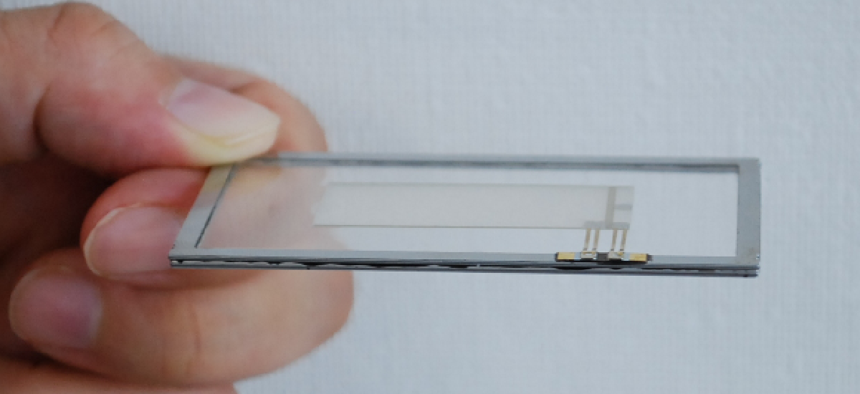Revolutionary way to transmit sound is being heard


Connecting state and local government leaders
Kyocera’s proprietary Smart Sonic technology transmits sounds via the air and through body tissue -- mitigating background noise and traveling through ear plugs.
Back in August, the GCN Lab reviewed the Kyocera Hydro Edge Android phone, looking to see if the rugged features and waterproofing made it a good choice for government workers as part of a bring-your-own-device plan.
The phone was impressive, and it flew through our rugged testing without missing a beat, including being fully submersed in up to three feet of water for 30 minutes. And although the touch screen did have problems with accuracy when it got wet, just like every other model of phone that allows for finger-keying, it was still accurate when dry.
But the Hydro Edge's screen was impressive for another reason.
This was the first phone we've ever tried where the glass acts as a Smart Sonic Receiver. In fact, only Kyocera has this technology, in which the speaker's actuator is connected to the phone’s screen module, thus turning the whole display area into the sound source. It uses twin paths to get sounds to the user, creating sound waves in the air like a traditional speaker, while also creating vibrations that are carried by body tissue.
The vibrations can move through clothing, and even through ear plugs, such as the ones people wear when shooting a firearm. In our testing, those ear plugs blocked out almost all the sound of a gun's crack when fired, and easily prevented the use of a normal phone. But the Hydro Edge was able to beam sound right through the plugs, enabling us to have a phone conversation even though we couldn't even hear anything else going on around us. For the rugged market, where users are often wearing heavy winter clothing or even ballistic protection, being able to use a phone without having to first adjust clothing or safety gear can be a huge advantage.
We predicted in the review that this technology would be a major feature that future rugged devices eventually have. Right now, only Kyocera, which invented the technology, uses it in phones.
Now it seems that others are agreeing with our assessment. Kyocera's Smart Sonic Sound piezo film speaker won the Minister of Economy, Trade and Industry Award this week at CEATEC, one of the largest trade shows in Asia. The ultra-rugged Kyocera Torque smartphone, which also features this technology, won the Mobile Tech category for the same show.
Besides its ability to beam sound through clothing and other obstructions, without being subject to blocking because of too much background noise, the single-millimeter-thick glass panel means that Kyocera rugged phones don’t need an external speaker. And that’s one less hole to make rugged.
In addition to use in rugged phones, the new sound technology may soon find its way into other devices. Kyocera recently dropped it into LG Electronics' new 55-inch curved-screen OLED TV. And Kyocera believes that it could also find a home in PC monitors and tablets, making those devices thinner, lighter and better able to convey sound in a 180 degree arc in front of their screens.
NEXT STORY: Is 3D the next step for agency Web pages?




